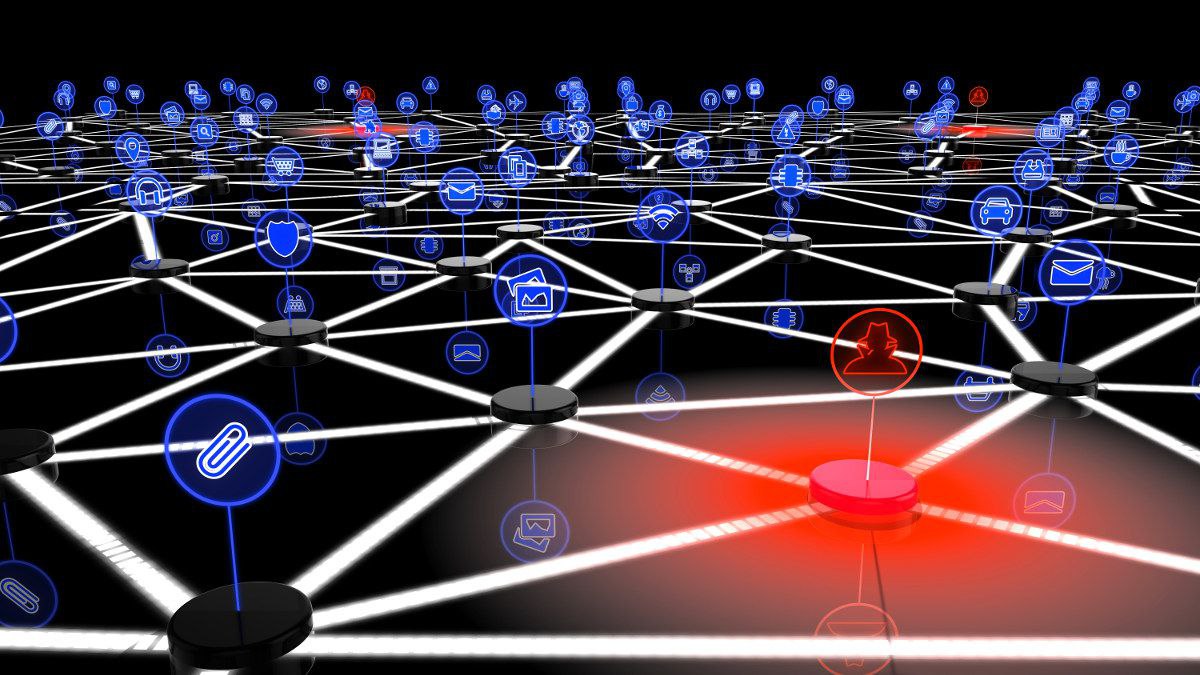What Is Anti-Malware? How Does It Work And Why Your Business Needs It.
As a business leader, cybersecurity should always be top of mind, but it can be complicated and overwhelming. You’ve likely heard of anti-malware and know it helps keep business networks and systems safe. But what exactly is anti-malware protection, and how does it work? How is it different to anti-spam and anti-virus?
In this article, we’ll provide a comprehensive, easy-to-understand guide to anti-malware. We’ll explore what it is and how it works. We’ll explain how it differs from anti-spam and anti-virus software. And we’ll also look at how to choose the right anti-malware solution for your business.
At Kelser, we include a full suite of endpoint protection solutions as part of our comprehensive managed IT services. Rather than convince business leaders to work with us, we provide descriptions in non-technical language so that business leaders have the information they need to make educated technology decisions for their organization.
We are often asked about anti-malware, so this article aims to tackle the subject head-on.
What Is Anti-Malware?
As the name suggests, anti-malware is a proactive software program that is designed to protect your IT systems and provide real-time protection by scanning networks and data for malware (or malicious software). When it identifies malware, it removes it.
While there are various software brands of anti-malware, the most important features and functions an anti-malware program should have are:
-
Real-time Malware Prevention:
Anti-malware blocks malicious software from infiltrating your system and does so by scanning downloaded files, websites you visit and applications you use.
-
Advanced Malware Detection:
Anti-malware also helps identify any existing malicious software on your system. -
Automatic Malware Removal:
If it detects any malware, anti-malware programs work in the background and quarantine or remove malicious software to minimize downtime and potential damage to your systems and networks.
How Does Anti-Malware Work?
Anti-malware software scans files and programs looking for software that is known to be malicious. They detect viruses in three primary ways:
1. Signature Scan
Many programs scan files looking for known malware definitions (or signatures). When the anti-malware finds a file with a signature that matches one in its comprehensive database of known malware signatures, the file is identified as potential malware.
This software must be updated regularly to ensure that the latest threat signatures are detectable.
2. Heuristic Analysis
Anti-malware also can use heuristics to check files for suspicious characteristics that indicate new and altered versions of existing threats. Once a threat is identified it can be removed.
3. Sandboxing
Anti-malware can also test suspicious programs in what is known as a sandbox or a safe space on the computer.
Think of this like a penned in play area for a baby. The baby can act as it likes inside the contained area, but the rest of the house is protected.
The computer sandbox is a safe area. The malware usually “thinks” it has access to the entire host, when it really only has access to the protected area, keeping the host device safe while the anti-malware observes its behavior.
If malicious behaviors are detected, the anti-malware kicks in and eliminates it.
One caveat: some malware knows when it is running in a sandbox and won’t exhibit malicious behavior until it actually gains access to the host device.
Once anti-malware detects a threat, it either removes the malicious file automatically or quarantines the file so you can remove it manually.
It’s important to note that for anti-malware to be as effective as possible you need to make sure that it is updated and is operating on the latest firmware or version. While most anti-malware programs do download and install updates automatically, some may require a manual check to ensure that you have the most up-to-date version.
How Is Anti-Malware Different From Antivirus and Anti-Spam Software?
Now that you know what anti-malware is, let’s talk about why it is different from anti-spam and anti-virus software. While both can be discussed at length, for the purpose of this article we will simply define them and focus on why they differ from anti-malware.
Anti-spam is a software program that concentrates on filtering unwanted and junk emails (spam emails), and isn’t directly associated to malware protection. It also helps protect your systems by filtering out harmful phishing emails that are a major security risk for businesses.
Anti-virus on the other hand is a specific type of anti-malware that only targets one kind of threat: viruses. It protects your system from programs designed to harm or copy themselves.
While all three are necessary to lay a good foundation for end point and user protection, anti-malware has a broader range of functionality and therefore protects you from a broad range of malicious software like ransomware, spyware, and adware.
Related article: Top 10 Cybersecurity Tools To Protect Business Data
What Could Happen If I Don’t Use Anti-Malware Software?
Anti-malware limits your exposure to cyber threats. It acts as your safety net and plays a vital role in protecting your business. Without it, you are at greater risk of your devices and network becoming infected with software that can lead to stolen credentials, identity theft, data theft, financial losses, legal issues, and more.
But anti-malware isn’t the only solution. One of the most effective (and most often overlooked) ways to guard against cyber threats is by providing cybersecurity awareness training for your employees.
Related article: Why Is It Important To Provide Security Awareness Training For Employees?
How Do I Choose The Right Anti-Malware Solution For My Business?
The market is flooded with an extensive range of free and paid versions of anti-malware. Choosing the right one that fits your business needs is essential. Here are some key factors to consider when choosing an anti-malware solution:
1. Business Size & Needs
The complexity of your IT infrastructure and the amount of data you handle will set the tone for what level of protection you require, and whether you need an anti-malware solution that offers features like scalability to grow with your business.
2. Functionality
It’s important to choose an anti-malware solution that aligns with your business needs. Assess the number and level of features you require, like real-time protection, email, scanning, website filtering, centralized management for multiple devices and cloud-based protection.
Again, the type and nature of data you handle will influence which functionalities matter the most for your business.
Additionally, not all anti-malware is equal. Look for anti-malware software that is tried, tested and has achieved industry recognized security certifications for the best protection.
What’s The Bottom Line?
After reading this article, you understand what anti-malware is, how it works, and how it differs from anti-spam and anti-virus software.
We’ve discussed what can happen if you don’t use it and that there are free and paid versions.
The bottom line is that anti-malware software is one tool to help keep your IT infrastructure safe, but it doesn’t protect your data from every cyber threat. In fact, no single security tool can keep your data and infrastructure 100% secure.
So, just as each additional layer of security at your home (including locks, alarm systems, and electronic gates) provides another deterrent for criminals, every layer of security you put in place provides more protection to keep your network and sensitive data safe.
If you find yourself wondering whether your organization’s security tools are up to the latest cyber threats, click the link below for a free checklist you can use to:
✔️Understand where your organization's cybersecurity policy needs improving
✔️Learn five best-practices and actions you can take to keep your organization's data secure
✔️Help ensure your organization follows the latest cybersecurity best practices
Get your free cybersecurity checklist now, so you can take action against the latest cybersecurity threats and keep your business secure.
If your internal IT organization struggles to stay on top of emerging cyber threats (or maybe you have no IT staff,) you may be considering working with an external IT provider. Explore several options to ensure that you get an IT provider that is the right fit for your business.
Related article: Proactive Vs. Reactive IT Support: Do The Differences Really Matter?
Read this article to learn 6 hidden external IT support costs to anticipate so you avoid financial surprises.
As informed consumers ourselves, we know that the first step we take when evaluating our options for a significant purchase is to search the internet. It’s important to compare your IT support options so that you don’t end up in a partnership that doesn’t work for you.
We are so committed to this advice that we’ve done some of the legwork for you. In our Learning Center you’ll find several articles comparing our offering to that of our competitors (based on publicly available information from our respective websites).
Learn how Charles IT and Kelser stack up.
Or, if you prefer to talk to a human like we do, click the link below and we’ll schedule a 15-minute call to discuss your IT pain points and see if we might be a good fit to work together.





